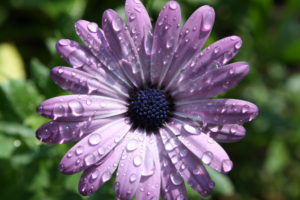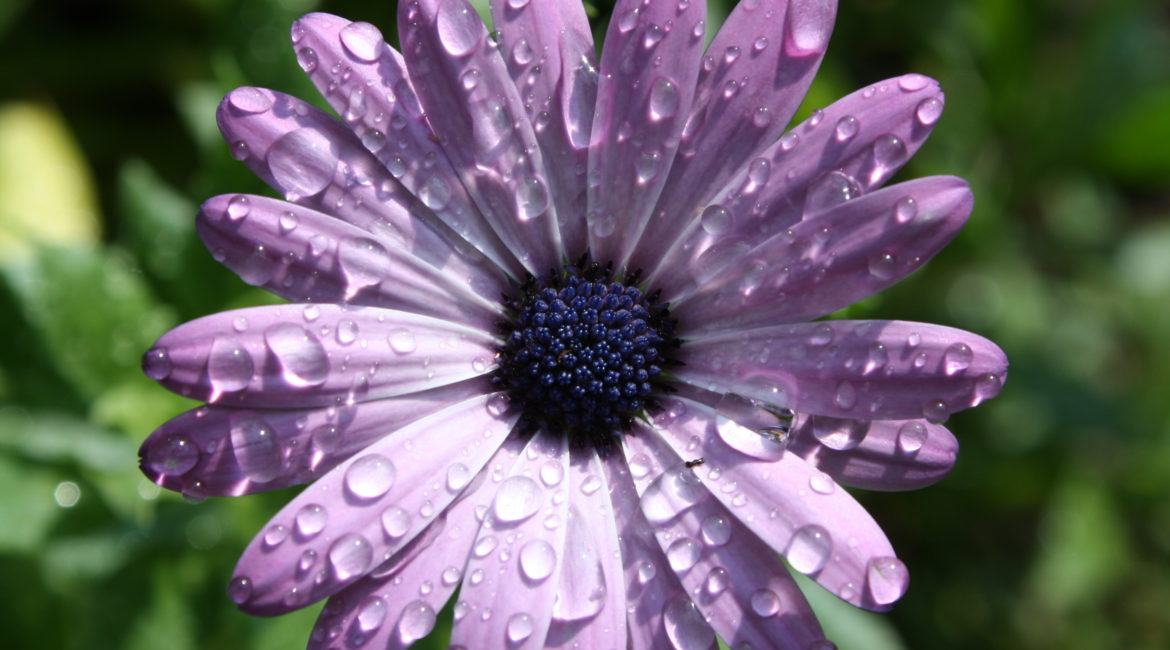
We all know the children’s song “Rain, Rain Go Away.” We’d stare out the window singing it, hoping Mother Nature would hear our plea and bring the sun out so we could play. While kids (and grownups) may not like the rain, your landscape absolutely loves it.
Your grass, trees, shrubs and flowers seem to be so much more vibrant and green after a good rain. Even though you water your plants during the dry season, your hose or sprinkler just doesn’t seem to have the same effect. Sure, it keeps them alive and growing, but there is just something special about rainwater. So what makes the rain have such a different effect? There are a few factors at play.
The first and most simple explanation is that a good rain – one that is steady (but not too hard) and lasts for one or several hours – has the ability to soak deep into the soil, reaching even some of the deeper roots. When we water our plants, unless we use an irrigation system, we tend to water just long enough to reach our plants’ more shallow roots. Using a sprinkler for an hour or more will allow it to go deeper, but during droughts, that is not always an option. Reaching the more shallow roots may keep your plants alive, but they may not reach their full potential.
Another reason that rainwater is better for lawns, trees and plants than tap water is its chemical makeup. Tap water from your city (or city water) contains chlorine. Chlorine keeps bacteria out of tap water and is therefore a necessity in water that people drink and bathe in. Tap water may also contain fluoride, either occurring naturally or as an additive, as well as minerals such as calcium and magnesium. These minerals give tap water its hardness, which in some cases requires homeowners to install water softening equipment. All of these elements combined can have a negative effect on your plants, such as turning the edges of leaves brown. Again, it may keep them alive, but they may have a difficult time flourishing.
Rainwater on the other hand has a different chemical makeup altogether. Although rainwater is not “pure,” what it does contain is beneficial to foliage. While traveling through the atmosphere, rainwater will absorb carbon dioxide from the air, which provides a certain level of acidity. If there is an abundance of pollution in the air, rain will become overly acidic – aka “acid rain.” While acid rain is not very plant (or people) friendly, rain containing a normal level of acidity is beneficial to plants, lawns and trees. The roots of your plants like some acidity. It makes minerals in the soil more available to roots by lowering the soil’s pH. This causes plants to become greener and brighter. Another atmospheric benefit to rainwater is nitrogen. Nitrogen, a natural fertilizer, is picked up along the way, as air is mostly made up of nitrogen. Rainwater also tends to be high in oxygen. Water that contains lower levels of oxygen can ‘choke’ the roots of plants – particularly succulents and cacti.
An additional greening effect of rainwater is that the minerals that it lacks (vs. tap water) tend to make the leaves of plants cleaner. Without those mineral deposits (think of spots on glasses after running a dishwasher), plant leaves are clean and shiny. Rainwater will also wash off any salt deposits that can come from watering with tap water and fertilization.
So, while we may be looking through our windows and wishing the rain away, take solace in the fact that our lawns, plants, shrubs and trees are very happy.





